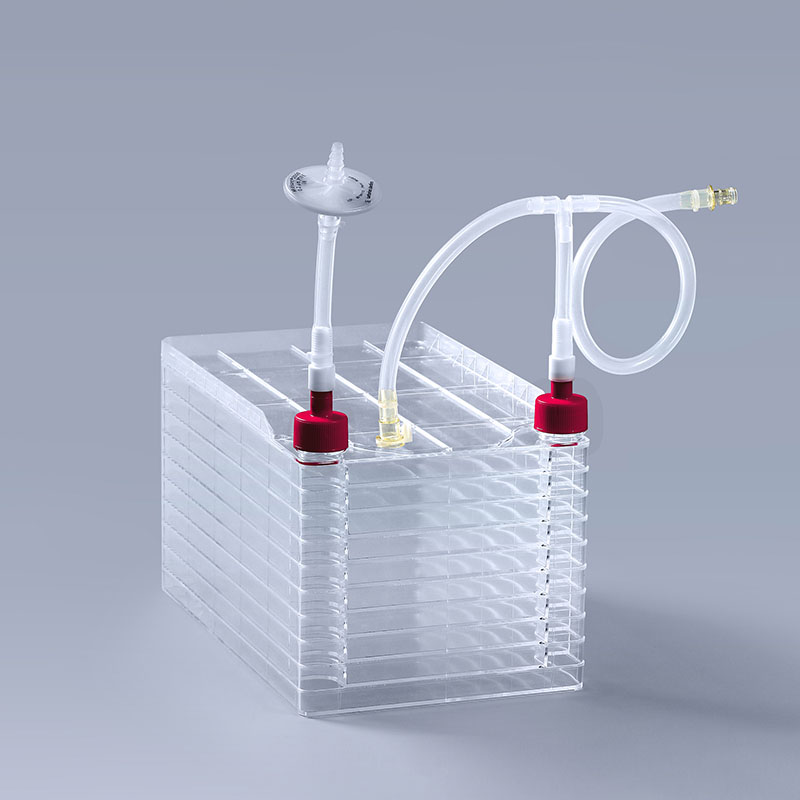In modern biotechnology, large-scale cell culture is an integral part of many pharmaceutical and bioengineering programs. To meet this need, cell factories have emerged as a powerful tool for advancing science.
1. Structural design:
The cell factory adopts multi-layer structure design, the common specifications include 1 layer, 2 layers, 5 layers, 10 layers and 40 layers, which can save the area of the factory building, and this design can ensure that the cells are cultured in the most suitable conditions, which is convenient for management, and improves the production efficiency and cell yield.
2. Culturing area:
The culture area of a cell factory is usually much larger than that of a traditional cell culture vessel, capable of accommodating a large number of cells at the same time. This is crucial for large-scale cell culture experiments and production. The demand for large-scale production in biopharmaceuticals and other fields is met through rational space planning.

3. Hermetically sealed piping system:
In order to prevent external contamination, the cell factory is equipped with an advanced hermetic piping system. This system not only ensures that the cells are not contaminated by external microorganisms during the cultivation process, but also effectively prevents the entry of gases, liquids and other contaminants. This design greatly improves the cleanliness of the production process and guarantees the purity and quality of cell culture.
Overall, the emergence of cell factories has provided an efficient, controllable and clean solution for large-scale cell culture, which has promoted the development of the biotechnology field. In the future, as technology continues to advance, this cell culture tool will continue to play its key role in large-scale cell culture, bringing more innovations and breakthroughs to the fields of biopharmaceuticals and bioengineering.
Translated with DeepL.com (free version)
The FAI climbed 5.9 percent year-on-year in the first 11 months of 2018, quickening from the 5.7-percent growth in Jan-Oct, the National Bureau of Statistics (NBS) said Friday in an online statement.
The key indicator of investment, dubbed a major growth driver, hit the bottom in August and has since started to rebound steadily.
In the face of emerging economic challenges home and abroad, China has stepped up efforts to stabilize investment, in particular rolling out measures to motivate private investors and channel funds into infrastructure.
Friday's data showed private investment, accounting for more than 60 percent of the total FAI, expanded by a brisk 8.7 percent.
NBS spokesperson Mao Shengyong said funds into weak economic links registered rapid increases as investment in environmental protection and agriculture jumped 42 percent and 12.5 percent respectively, much faster than the average.
In breakdown, investment in high-tech and equipment manufacturing remained vigorous with 16.1-percent and 11.6-percent increases respectively in the first 11 months. Infrastructure investment gained 3.7 percent, staying flat. Investment in property development rose 9.7 percent, also unchanged.
 English
English


















































